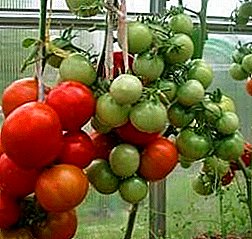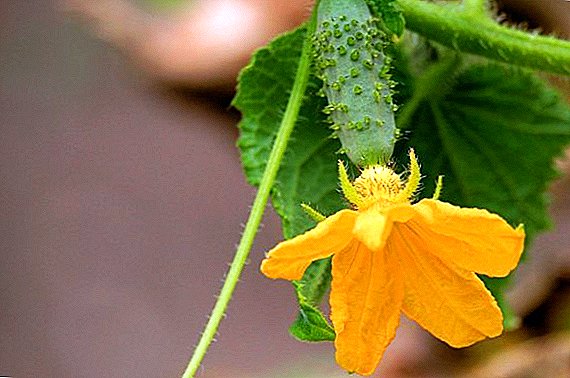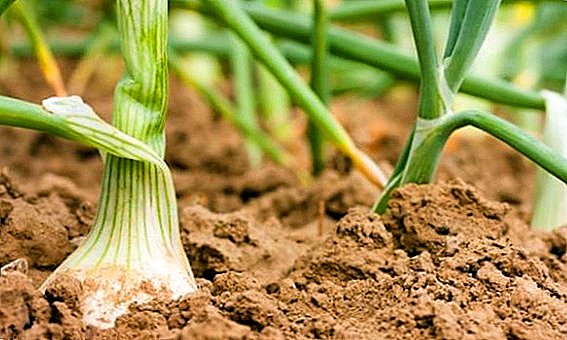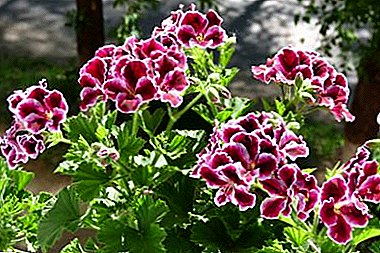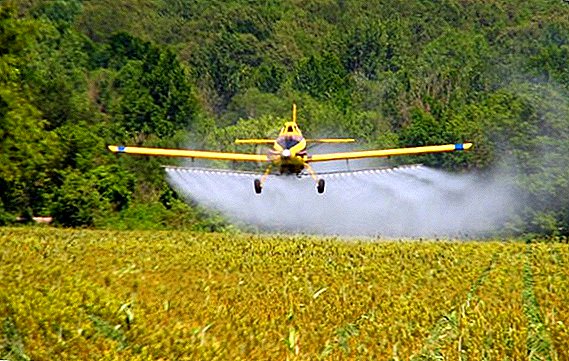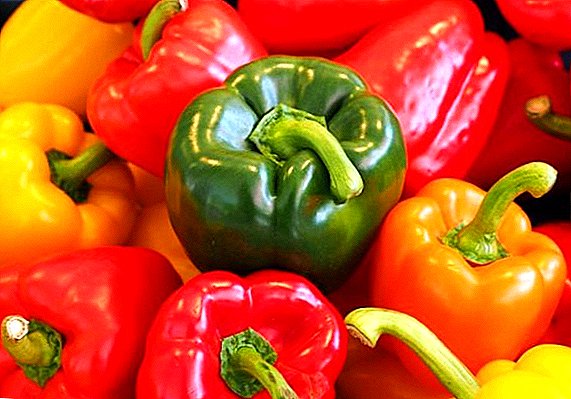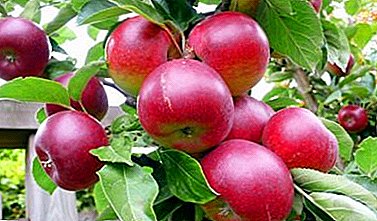
For those who decide to grow apples in Central Russia, you need to be more attentive to the choice of varieties of apple trees. Besides the fact that he must produce a high and high-quality crop, another plant must quickly acclimatize to the conditions of the region. Read about it in the article. Watch a useful video.
Names of the best species, their features
The advantage of autumn apples is high quality and useful properties.. By the collection period, they manage to accumulate vitamins and necessary substances, to grow to large sizes.
IMPORTANT: The main feature is that late fruits are suitable for long-term storage, up to spring. In addition, they have an excellent presentation and are suitable for commercial use.
How to choose?
Before you buy seedlings for your garden, you must carefully consider the issue of studying varieties. Apple trees should be suitable for all parameters for the region. Here is what you should pay attention to when choosing the best varieties for the middle band of Russia:
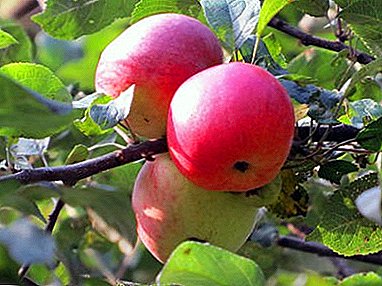 Variety resistance to winter cold. The tree must withstand severe winter frosts and spring frosts, withstand the sharp fall in temperature in autumn characteristic of central Russia.
Variety resistance to winter cold. The tree must withstand severe winter frosts and spring frosts, withstand the sharp fall in temperature in autumn characteristic of central Russia.- Fruiting. The first harvest from early ripening varieties of apple trees can be taken on the 2nd - 4th year; sredneplodnyh on the 5th - 8th year; from the late - from the 9th to the 10th to the 12th year.
- Yield. It is better to choose varieties of apple trees that will bear fruit every year.
- Apple ripening period. Varieties are divided into three periods: early, middle and late.
- Apple keeping. The best winter varieties of apples can maintain all qualities until the end of spring. For autumn varieties, good keeping quality is considered 1-2 months.
- Disease Immunity. Trees with high resistance to diseases and pests will require fewer treatments. That will save time and budget for further care.
- Crown shape. Depending on the area of the garden, you can pick up a variety of apple trees with a small or medium compact crown habit.
- Fruit Tastes: sweet, sour, juicy, with dense or friable pulp.
For the middle Volga region
For the Volga region is characterized by hot, sunny summer and long, frosty winters. Accordingly, you need to choose those autumn varieties of apple trees for the middle Volga region that can withstand dry soil in the summer and at the same time resist the bitter cold in the cold season.
Description of trees with photos
Arkady tenkovsky

It ripens in the first weeks of autumn. Fruits of medium and large size; in shape, regular, round-conic; have a deep and wide funnel. The color is light cream with a greenish tone and a barely perceptible ruddy side. Trees with strong branches and shoots.
Usually average in height. The bark is dark brown, identical to the color of new shoots, old branches and trunk. Crop growth occurs in the 4-5th year after disembarkation. Apple trees are poorly susceptible to scab, they are not afraid of the winter cold.
Bashkir handsome

Belongs to the category of early autumn varieties of apples, for the middle band. Maturation ends at the end of September. Apples stand out bright, almost solid, scarlet stripes and wax film. Fruits are medium-sized sweet-sour to taste. The tree is distinguished by its gorgeous foliage, strong branches that grow at a 90º angle. The bark of young shoots is dark brown, the trunk and those branches that are older, yellow shade; in the nursery they can be found with a light green color.
Borovinka (Kharlamov)

The harvest of this variety is ready for harvest in early September, stored until December. The size of apples is closer to large, the surface is smooth, without ribs. The shape of flat or bulb. The color of the fruit is yellow-green, with a dark red dotted-striped side. Pulp of a yellow shade, friable, with coarse-grained structural, juicy and sour. Trees are medium in size with fragile wood.
Shoots in typical brown tones with long internodes, red and purple hues. Apple trees tolerate the winter well, bring a great harvest. Weakly tolerate the scab of fruits and leaves. With a strong gust of wind, the fruits fall off. Apples appear in the 4th year after planting.
Watch the video about the apple Borovinka:
Volzhskaya beauty

Ripen by mid-September. The apples are rather large, rounded-ovoid in shape, the color is light, close to white, with a slight flush and large dots. The flesh is juicy and tasty, has a fine-grained structure. The tree is strong and tall, with large branches. The shoots are red-brown, with prominent white tubercles, not hairy, may be slightly bent.
Zaryanka

Another autumn "breed" of apple trees. The fruits are flat-rounded in shape, with a slight ribbing, beveled. The skin is dry and glossy. Painted in brown red stripes on a pink background. Fruits are very juicy, taste sweet and sour. The structure is fine-grained with a cream shade. Trees are medium with a rounded not too thick crown. Variety resistant to scab.
Anyway

Harvest ready for harvest in early October. Apples of the correct rounded conical shape, medium size. They have a deep wide funnel and a short thick stalk. For this variety is characterized by almost continuous raspberry red color. The flesh is white, juicy, with good taste and fine-grained structure. The tree is low with a large sparse crown. The trunk and branches are brown, the color of young shoots is dark cherry, with many small lentils.
Autumn striped (Streyfling)

Apples of this variety have distinctive features.:
- color (heterogeneous orange stripes on a light yellow background);
- large size;
- the shape of the fruit resembles an egg, they have a very small funnel. Flesh with a slight yellowness, sometimes with a pink tinge;
- loose;
- quite juicy.
Ripens by mid-September. The trees are tall, with a powerful sprawling crown. Give abundant yields. Full ripening of fruit comes at the end of September. On the tree sit tight. The variety is highly resistant to scab.
Autumn joy

Large apples, green and yellow in color, half drenched in red blush. Juicy flesh of medium density, light cream color has a sweetish taste. Crop harvested in early September. The variety is highly resistant to scab..
Fruits of apple trees of medium size, round or conical shape, without ribs. Trees are vigorous, with a dense crown. Perfectly tolerate winter. The bark is brown in color. Shoots straight, thin, burgundy, medium-pubescent.
Watch the video about apple varieties Autumn joy:
Spartacus

Late autumn cultivar ripening in late September. The fruits are broad, oval, medium and large in size, with a very deep funnel and short stem, painted with a dull malone red blush with blurred stripes and a bluish wax bloom.
The flesh is white with a creamy tinge, loose, juicy, with a slightly “empty” flavor. The skin is thick and rough. Trees with heavily leafy crown, light brown branches. A very characteristic feature is the shoots of a bright red-brown color.
Ural bulk

The fruits ripen in mid-September. Small in size, rounded-conical, with narrow funnel and very long stem, light yellow. The flesh is light cream, juicy, loose, fine-grained, pleasant sweet taste with a weak acid. The trees are large with a rounded crown, long, numerous branches light brown-reddish color. The shoots are thin, dark purple, pubescent.
Yield

The variety is late autumn-early winter. The fruits ripen in the second half of September. The apples are rather round, rounded-conical, with merging stripes of maroon color on a dull red background, with white and cream dense fine-grained tasty flesh. The tree is medium thick, with thin and long branches growing at a sharp angle. Shoots are straight, red-brown.
Young naturalist

This is one of the best apple varieties of autumn ripening. Winter hardiness and scab resistance are high. Tree semi-dwarf type. Fruits of medium size, flat-rounded, smooth. The palette of colors varies from green to yellow with blurred bright red stripes. The flesh is creamy, juicy, sweet-sour, excellent taste.
General rules of care
- Planting seedlings. Landing pit and hill should be prepared depending on the location of groundwater in the area. For ease of maintenance, the distance between the trees should be at least 4 meters.
- Caring for an apple tree in the year of planting. After planting in the spring, the seedling should be immediately shortened by a central guide to 2-3 buds. This stimulates the growth of lateral shoots. During the first year of life, caring for an apple is reduced to watering and protection from pests.
- Shaped pruning. The next spring, you must begin the formation of the crown of the tree. The process involves shortening young shoots, cutting branches going into the crown and extending from the trunk at an acute angle. Formation of the crown of the tree occurs annually throughout the life of an apple tree. This is not only a guarantee of a good harvest, but also of health and longevity.
- The maintenance of the tree trunk circle and care for it. In the first years of the tree’s life, it is better to keep the tree trunk free from weeds and plantings, periodically weeding it and loosening it. You can mulch it with rotted manure or mowed grass. As soon as the apple tree enters the period of fruiting, mulching should be stopped, and the tree trunk can be planted with a loose lawn.
- How to feed an apple tree. Caring for an apple tree always involves applying organic or mineral fertilizers. The apple tree receives the first top dressing when planting, when manure or humus is added to the pit bottom. This is enough for the first three to five years.
The next 15-20 years the tree will absorb substances from the soil. After 25-30 years, mineral fertilizers should be applied to the tree trunk of the apple tree, such a procedure will save the tree from a lack of nitrogen and phosphorus, and additional feeding will last for 3-5 years.
- Pest and disease protection. To protect the garden from pests and diseases, regular preventive measures are needed. Without the use of chemicals can not do. Spray need at least twice from pests and the same from diseases.ATTENTION: The first spraying is carried out before flowering on the green cone. It is aimed at the destruction of insects crawling out of the ground or hibernating on the bark and inhibiting the development of fungal diseases.
The second is after the flowering of the garden, when the ovaries are noticeable. His goal - the destruction of insects that can damage the ovary, and flying mushroom spores. Preparations can be any, the main thing is to apply them in time!
- Sanitary pruning. Sanitary pruning should also be included in the care of the apple tree. It represents the removal of dry and diseased branches, regular annual thinning of the crown. If you do not conduct these activities, the tree may become irreversibly ill and die.
Conclusion
As you understand, not any sort of apple will bear the most fruit in the conditions of a particular region. It is necessary to take a responsible approach to the selection of seedlings, carefully examine their characteristics. By making the right choice, you can enjoy the harvest annually.


 Variety resistance to winter cold. The tree must withstand severe winter frosts and spring frosts, withstand the sharp fall in temperature in autumn characteristic of central Russia.
Variety resistance to winter cold. The tree must withstand severe winter frosts and spring frosts, withstand the sharp fall in temperature in autumn characteristic of central Russia.